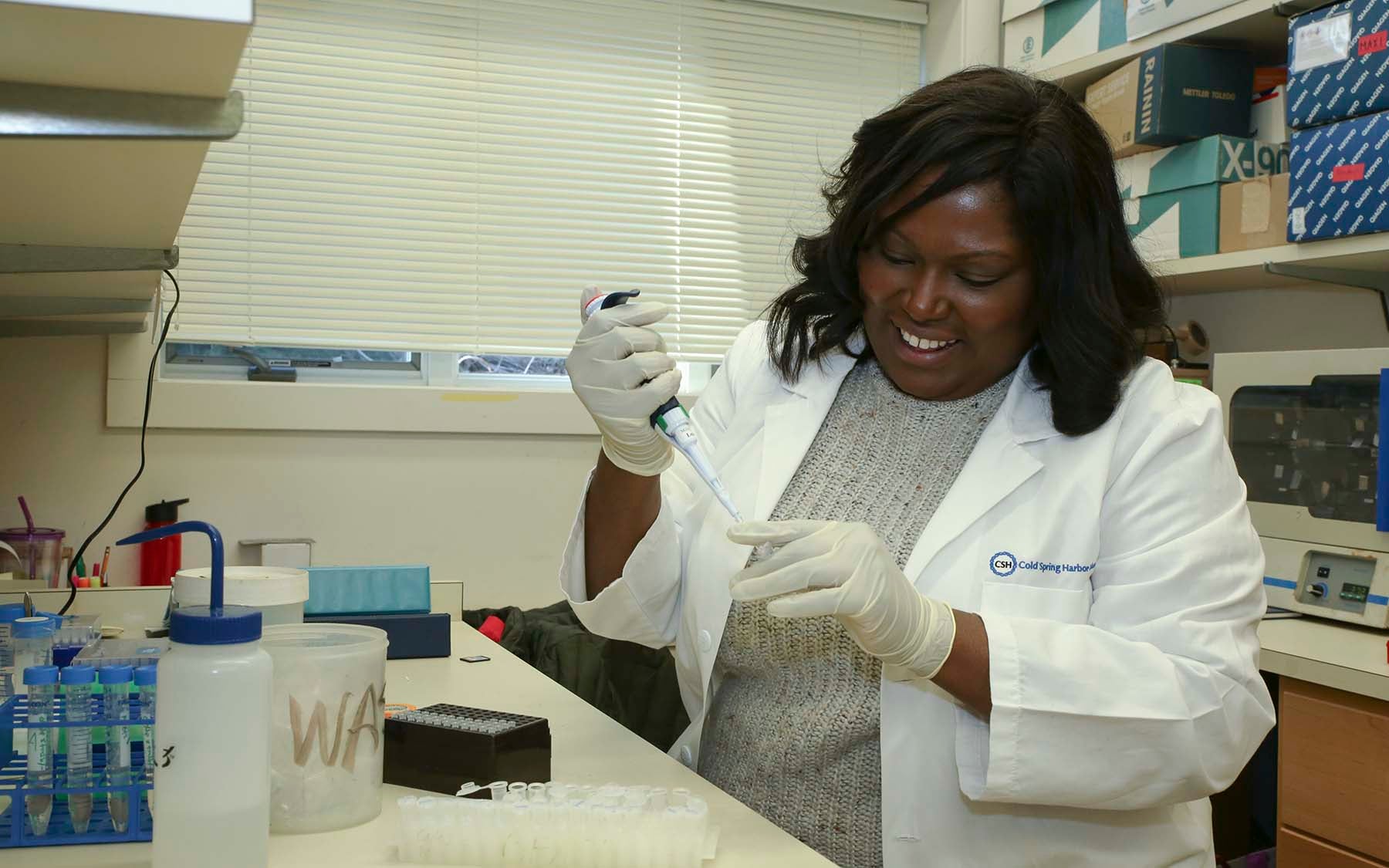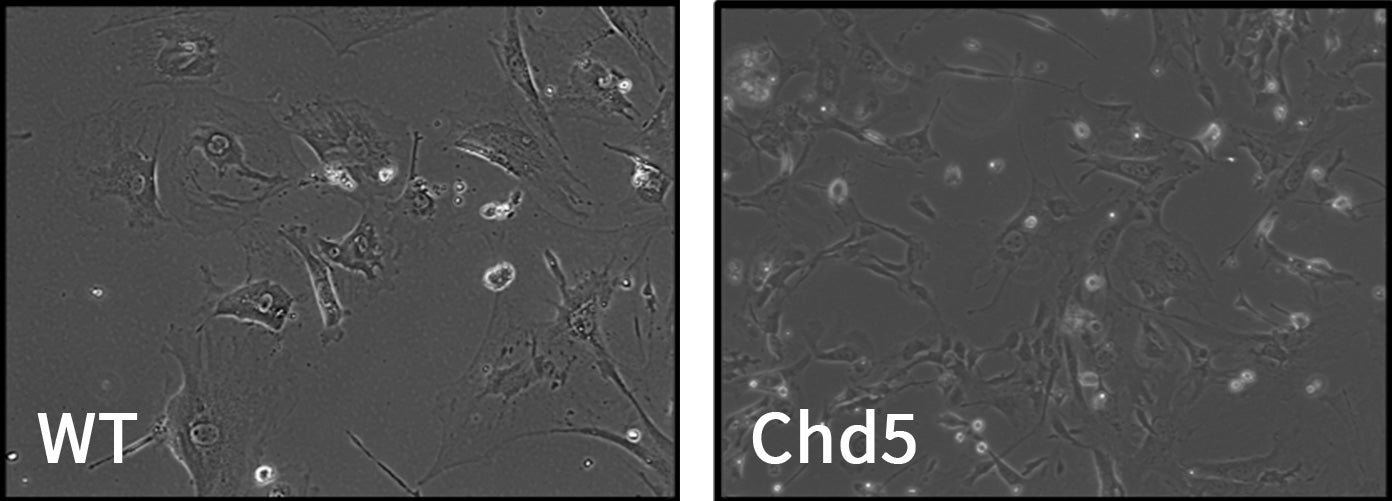Banks studies a tumor suppressor gene that the Mills lab discovered, called CHD5, but her work at CSHL isn’t her only experience with tumors. Last year, Banks learned that a benign tumor in her brain was pressing against her optic nerve. It had been causing vision loss in her right eye. The tumor was successfully removed and Banks’s full vision was restored, but in the time that she and her doctors were working towards a diagnosis, she came to realize just how important vision is to cancer research.
“It affected my confidence as a researcher because it was very difficult, and it slowed me down quite a bit,” she explained. “The fact that I was a part of one of those statistics that I had read in the past was just mind-blowing. What were the odds that I’d have this brain tumor, and then be working in the lab that’s focused on brain cancers?”
So what is a cancer researcher actually looking at? Banks examines a few different kinds of samples, from cancerous cells in petri dishes to biopsies of cancerous organs. In her experiments, she sees how increased or decreased dosages of CHD5 work in the presence or absence of other tumor suppressors, assessing the mechanisms at a cellular level as well in genetically engineered animal models. What she’s looking for is increased cell proliferation and cellular senescence, which are, respectively, processes where cells multiply too fast or stop multiplying at all. It is through this examination that she is able to see the relationship between the two, which provides insights into what’s happening at a cellular level. In some cases Banks is looking at her subjects with the naked eye, and in others, her vision is enhanced through tools like a microscope.
Vision is crucial to studying cancer, according to Banks. It’s not just that she needs to see the results of experiments, but also that she needs to accurately carry out every stage of an experiment. Part of Banks’s work entails “looking at if there are any developmental abnormalities in our samples,” she explained. “It’s important because I’m using cell culture and analyzing the development of our mouse models. So I’m looking at these cells or models through the microscope, on top of working with solutions and all the other set-up. I consistently need to make precise measurements, or it could affect my results.”
Banks’s personal experiences have had an important impact on her professional life, and she makes a point of sharing her wisdom and expertise with others. On top of her research at CSHL, she volunteers as a mentor through the Long Island chapter of the NAACP. She works in their Afro-Academic, Cultural, Technological and Scientific Olympic (ACT-SO) program, where she guides high school students through science projects and early research. She credits this commitment to mentoring to the great mentors in her own career, like Mills, who inspired her to see the appeal of studying brain cancer.
“When I met Alea [Mills], she told me about her research. It all sounded interesting and amazing, but I thought, ‘this is so different from what I did in grad school.’ But you know, I love a challenge,” Banks said. “I would love to have a role in bringing up the next generation of scientists, and just getting them passionate too in this type of field.”

